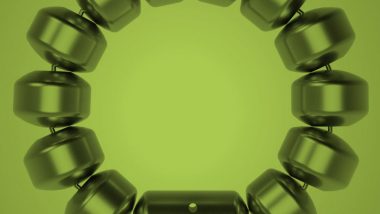Through the end of the year, we’re sharing some of the best articles from the AGA opinion magazine, AGA Perspectives. This opinion article was originally published in AGA Perspectives in 2019.
For most individuals with gastroesophageal reflux, treatment with antisecretory medication yields excellent symptom relief. However, medical management fails in a subset of patients with more severe symptoms, and antireflux surgery should be considered. Traditionally the procedure of choice has been a 360° (Nissen) fundoplication. In most patients, this delivers a good long-term outcome, with effective reflux control and few side effects, and durability has now been confirmed at follow-up to 20 years. Unfortunately, a subset of approximately 10 to 15 percent are less than happy with their outcome following Nissen fundoplication, due to either recurrent reflux symptoms, or side effects such as dysphagia, bloating and flatulence.
When patients undergo a procedure for gastroesophageal reflux, they want their symptoms to be cured. They also do not want the treatment to generate a new problem which leaves them worse off than before their surgery. Some trade-offs, however, might be acceptable, and a certain level of less troublesome side effects might be a reasonable exchange for effective relief of reflux symptoms which adversely impact quality of life. The challenge for surgeons is to deliver an acceptable outcome for all patients considering surgery for reflux, and this has led to a focus on procedures that not only control reflux, but also minimize the risk and impact of the side effects which can follow Nissen fundoplication.
The quest to minimize side effects has followed divergent paths in different parts of the world. Many North American clinicians consider the words “fundoplication” and “Nissen” to be equivalent and interchangeable, and many surgeons have been reluctant to consider alternative fundoplication options which might reduce side effects. In other parts of the world, however, other fundoplication options have been pursued more vigorously. By the mid-1990s, surgeons in parts of Europe and Australia recognized that a significant subset of patients were not happy with their outcome following Nissen fundoplication, and this led to more formal evaluation of partial fundoplications as a strategy to reduce post-fundoplication side effects.
Partial fundoplications entail wrapping less than the full circumference of the esophagus by placing the gastric fundus either in front (anterior) or behind (posterior) the esophagus. These procedures were first described during the pre-1990s open surgery era, and laparoscopic variants were developed and described in the 1990s, with the aim of delivering a better overall outcome. Promising early results from case series were followed by the publication of randomized controlled trials in the 1990s and 2000s, and subsequent meta-analyses of these trials have confirmed effective reflux control and less side effects, compared to Nissen fundoplication. The promising early outcomes have now been confirmed at longer term follow-up of up to 10 to 20 years.
There are some potential differences between the anterior and posterior partial fundoplication variants, with posterior partial fundoplications likely to achieve somewhat better reflux control, offset by less side effects following anterior partial fundoplication variants. An overview of all the randomized trial data suggests that there are trade-offs between reflux control versus side effects, across a fundoplication spectrum, ranging from Nissen to posterior to anterior partial variants. All of these procedures achieve high success rates, with 85 to 90 percent or more patients happy with their outcome at long-term follow-up, but with the anterior partial fundoplications doing better in terms of minimizing side effects. Importantly, construction of a partial fundoplication requires the same operating room equipment and the same surgical skill set that is required for Nissen fundoplication, and as a consequence, operating times and costs are virtually identical. For these reasons, partial fundoplications deliver an established antireflux procedure with proven good long-term outcomes which effectively address the issue of post-Nissen fundoplication side effects. This is the solution that many surgeons in Australia and Europe have pursued.
The LINX procedure seeks to address the same problem by also minimizing side effects while still delivering good reflux control. Enthusiasm for this procedure confirms that many North American surgeons have also recognised that Nissen fundoplication has not always delivered a satisfactory outcome. However, is LINX the best solution or even a logical solution to this problem?
Unlike a fundoplication, which creates a flap valve, the LINX procedure implants an expandable ring of magnetic beads around the distal esophagus, and this acts as a new sphincter. With a novel procedure such as LINX, which does not replicate the mechanism underpinning fundoplication, questions should be asked and answered before LINX is accepted into mainstream clinical practice. These include:
- Can LINX deliver a better outcome than the well-established alternatives which include partial fundoplication?
- Is the increased expense associated with implanting a novel device justified by an improved clinical outcome?
- Does LINX deliver acceptable long-term reflux control?
- Is LINX associated with any unacceptable complications and risks?
For LINX, these questions remain largely unanswered. Early objective outcome data following anterior and posterior partial fundoplication demonstrates normalization of esophageal acidification in more than 90 percent of patients. Early LINX data does not appear to match these outcomes. Long-term outcomes are known for both anterior and posterior partial fundoplication variants, with success rates of more than 85 percent at 10 to 20 years follow-up reported in randomized trials. The longevity of LINX will remain uncertain for at least another five to 10 years. LINX entails the placement of a foreign body around the lower esophagus. The history of devices placed around the gastroesophageal junction reveals that erosion of devices into the lumen of the esophagus is a significant risk, and reports of LINX erosion are now emerging.
For now, surgeons and their patients seeking to reduce the risk of side effects following Nissen fundoplication are able to choose between a partial fundoplication or LINX. Compared to Nissen fundoplication, partial fundoplications have a proven better side effect profile and deliver good long-term reflux control and high levels of satisfaction in most patients. Uncertainty for LINX currently exists for long-term reflux control, and the long-term risk of device erosion. Furthermore, it is hard to see how LINX can deliver better reflux control than a partial fundoplication or deliver a cost-effective solution which offsets the additional expense of the implantable prosthesis. Arguably, LINX seeks to solve a problem that was solved many years ago in other parts of the world by modifying Nissen’s original procedure to a partial fundoplication. The onus is now on the proponents of LINX to demonstrate what has already been demonstrated for partial fundoplications: long-term efficacy, safety and cost utility, in well-designed prospective randomized controlled trials.













